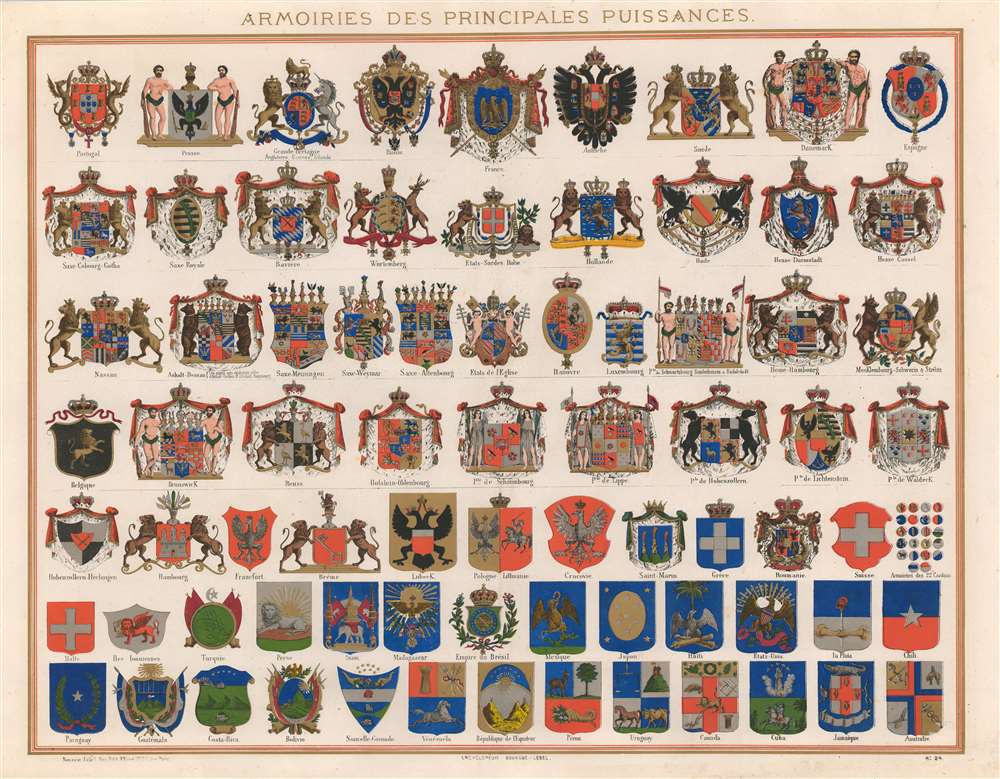1860 Bouasse-Lebel Chart of Armorial Crests of World Powers
Armories-bouasselebel-1860
Title
1860 (undated) 21.25 x 27.5 in (53.975 x 69.85 cm)
Description
Chromolithography
Chromolithography is a color lithographic technique developed in the mid-19th century. The process involved using multiple lithographic stones, one for each color, to yield a rich composite effect. Oftentimes, the process would start with a black basecoat upon which subsequent colors were layered. Some chromolithographs used 30 or more separate lithographic stones to achieve the desired effect. Chromolithograph color could also be effectively blended for even more dramatic results. The process became extremely popular in the late 19th and early 20th centuries, when it emerged as the dominate method of color printing. The vivid color chromolithography produced made it exceptionally effective for advertising and propaganda imagery.Publication History and Census
This chart was created c. 1860 and published by Bouasse-Lebel. Several editions of this chart were published during the 19th century, nonetheless, we have been unable to locate any other examples of this edition.Cartographer
Eulalie Bouasse-Lebel (1809 - 1898) was a French publisher. Born in Paris, she was the only daughter of Jacques-Auguste Lebel, a Parisian printer. She married Francois-Marie Bouasee, a foreman, in 1827, who abandoned Eulalie and her two children at some point, although it is unclear when. Eulalie founded her own printing firm in 1845 under the name 'Madame Bouasse, nee Lebel' and focused on religious imagery. She moved the printing house to 29, Rue St. Sulpice, then the center of the religious publishing community in Paris in 1847. In 1852, Eulalie sold her business to her eldest son, Henri, and her younger son, Emile(1832 - 1881), worked with Henri for some time. Emile left his brother's firm and started his own, Bouasse-Jeune, in 1867. Emile also based his company in St. Sulpice, and a rivalry erupted between the brothers and their firms. Both focused on religious art and were famous for their filigree, lace, and modern printing techniques, including chromolithography. Emile's widow and children took over his business after he died in 1881, and it remained in the family until the beginning of the 20th century. Henri died in 1912, and his son Albert took over Bouasse-Lebel. The company was drastically affected by the sharp decline in interest in religious art after World War II, along with the rise of cheap photographic reproductions. Albert died in 1955, and Bouasse-Lebel closed in the 1960s. More by this mapmaker...

